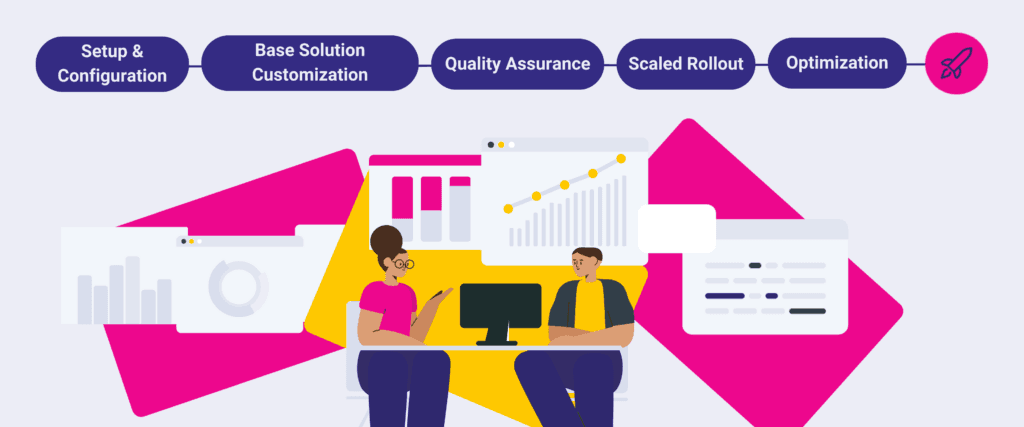Venturing into the realm of conversational automation promises a plethora of benefits, but it’s a path strewn with challenges. If implementing conversational automation is hasty or ill-planned, it can lead to disjointed user experiences and missed opportunities. However, with a strategic approach, businesses can seamlessly integrate these tools, unlocking their full potential and ensuring meaningful user interactions.
Steps to Integrate Conversational Platforms
Embarking on the conversational automation journey begins with clarity. It’s imperative for businesses to outline their objectives, discerning whether the goal is to bolster customer support, amplify sales, or optimize internal operations. This foundational clarity steers the subsequent phases, ensuring a harmonious alignment between business aspirations and the selected conversational tool. The market, brimming with diverse conversational solutions, offers a spectrum of choices.
This decision, however, should be made judiciously, considering present requirements, future growth prospects, and budgetary considerations. Once the tool is chosen, the intricate phase of training commences. Implementing conversational automation platforms isn’t just a mere plug-and-play; they demand meticulous training, which involves data input, user interaction simulations, and iterative refinements based on feedback.

Choosing the Right Conversational Automation Platform for Your Business
The selection of a conversational platform is pivotal and can make or break the user experience. The chosen platforms integration capabilities are paramount. It should meld seamlessly with existing business infrastructures, ensuring fluid data exchanges and operational cohesion.
Introducing Teneo Conversational IVR: The Pinnacle of Conversational Automation
In this intricate landscape where the right choice of a conversational platform is crucial, Teneo Conversational IVR is designed with a focus on seamless integration and a user-centric approach and offers a suite of benefits that aligns perfectly with the demands of modern Conversational Automation.

Training and Continuous Learning
The dynamic nature of AI mandates that conversational tools undergo continuous training and refinement. Establishing robust feedback loops is crucial, allowing users to provide insights into their interactions. This feedback, when assimilated, fine-tunes the tool’s algorithms, ensuring consistently relevant and accurate responses. Additionally, with the ever-evolving landscape of AI and conversational automation, businesses must stay updated, equipping their tools with the latest features and ensuring alignment with emerging trends.

The intricate journey of integrating conversational automation is both challenging and rewarding. By adopting a methodical approach, prioritizing user feedback, and fostering continuous learning, businesses can revolutionize their operations. The end result is not just automated interactions, but dialogues that are personalized, engaging, and deeply satisfying for the user.
Embark on Your Journey to Conversational Excellence with Teneo.ai
Ready to revolutionize your business operations through personalized, engaging, and deeply satisfying conversational automation? Teneo.ai is here to guide you every step of the way. Discover how our solutions can help you adopt a methodical approach, prioritize user feedback, and foster continuous learning.

